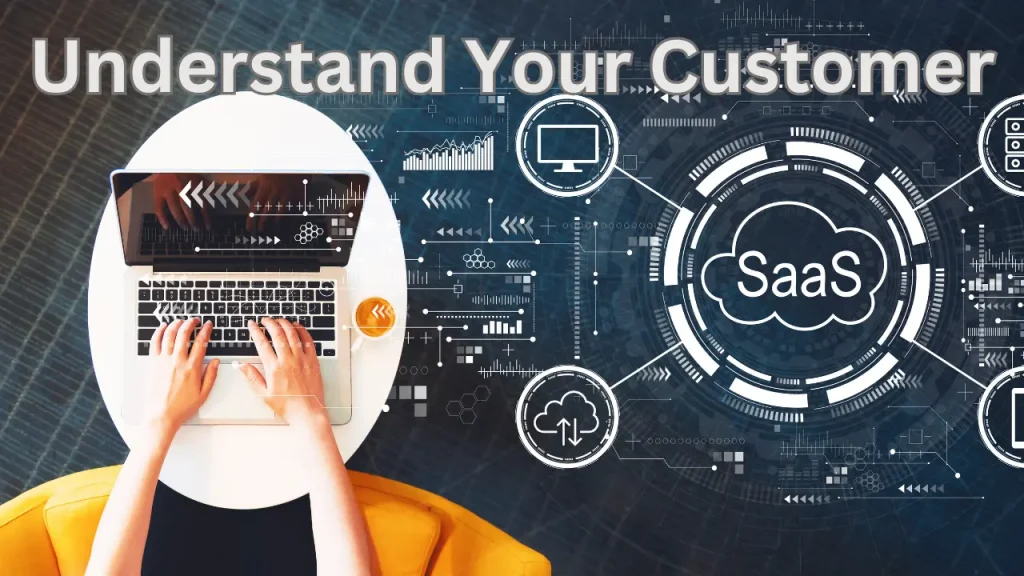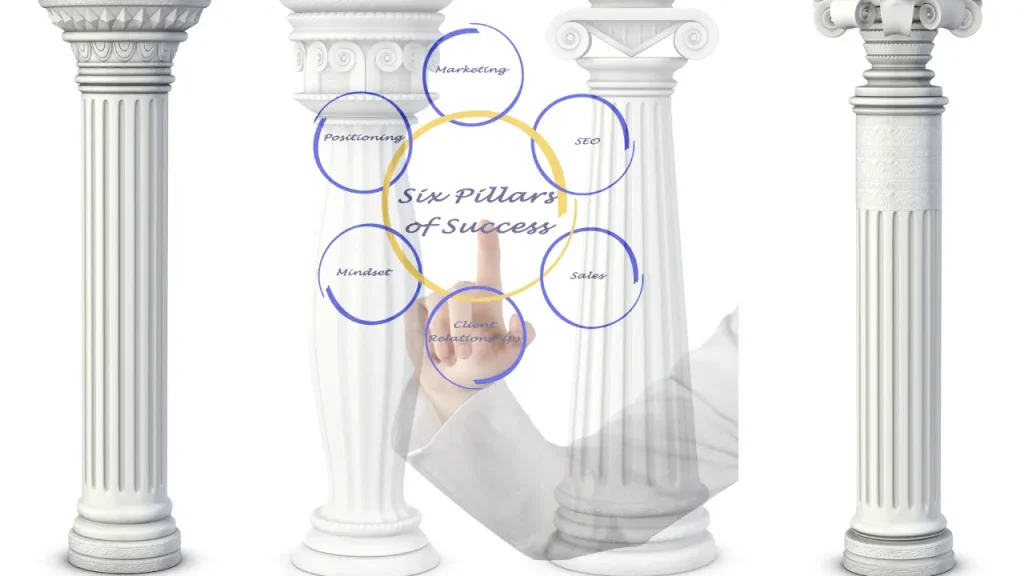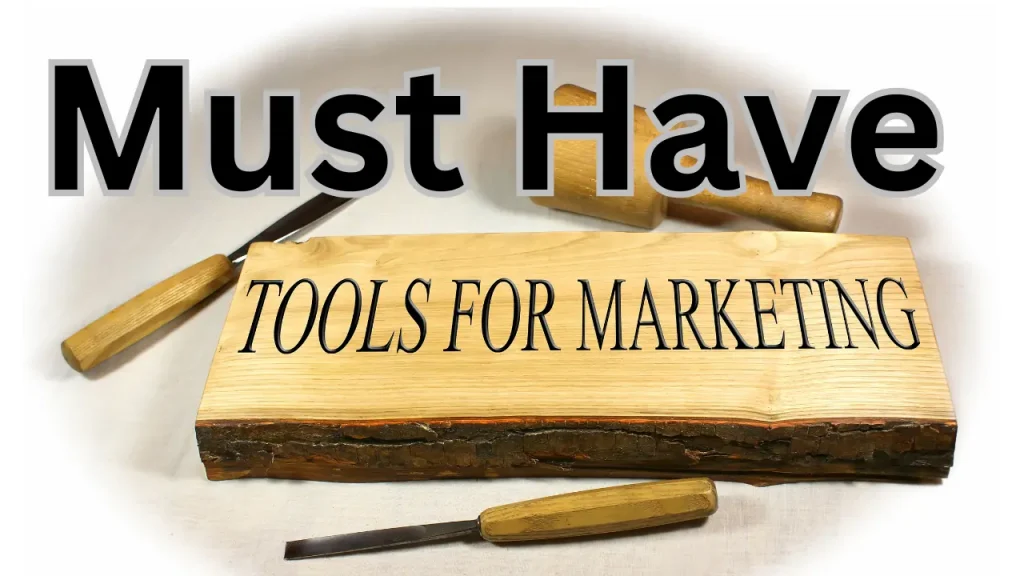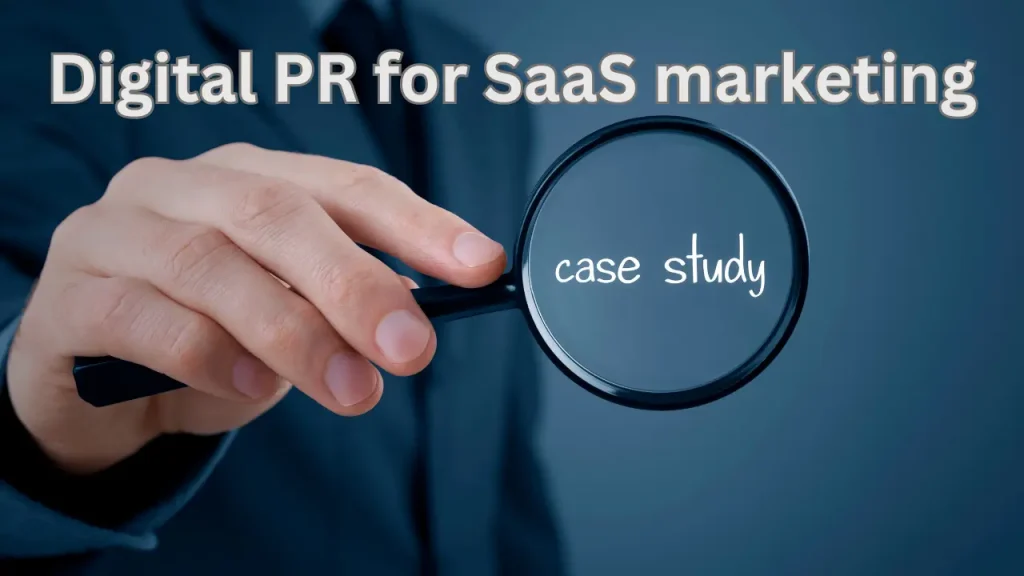Table of Contents
I. Introduction
In the ever-expanding B2B SaaS universe, standing out isn’t just a goal—it’s a matter of survival. With new software solutions popping up faster than you can say “cloud computing,” capturing your target audience’s attention is a challenge, especially for smaller businesses.
That’s where a rock-solid B2B SaaS marketing strategy comes in. It’s your compass in the vast digital landscape, guiding your efforts and ensuring every move you make is aimed at growth.
But let’s be honest, marketing jargon can be overwhelming. That’s why we’re cutting through the noise and giving you the real deal. This isn’t just another article filled with empty buzzwords. We’re delivering actionable advice, real-world examples, and the latest tools to help you create a B2B SaaS marketing strategy that actually works.
Whether you’re a seasoned marketer or a bootstrapped founder, this guide will arm you with the knowledge and tactics to generate leads, boost revenue, and dominate your niche. Let’s get started.
II. Understanding Your B2B SaaS Customer

Before you start blasting out marketing messages, let’s get a good look at who you’re talking to. It’s time to create a profile of your ideal B2B SaaS customer – your buyer persona.
This isn’t about guessing demographics; it’s about getting into the mind of your target customer. What are their pain points? What keeps them up at night? What are their professional goals? By understanding their motivations and challenges, you can tailor your b2b saas marketing strategy to speak directly to their needs.
Next, it’s time to map out the customer journey – the path they take from initial awareness of your product to the final purchase decision. What steps do they take along the way? What information do they need at each stage? By understanding this journey, you can identify key touchpoints where your marketing efforts will have the most impact.
Think of it like a treasure map, with each touchpoint a clue leading you to the ultimate prize: a loyal customer. By aligning your b2b saas marketing strategy with your customer’s journey, you’ll ensure you’re delivering the right message at the right time, guiding them seamlessly towards conversion.
III. Pillars of a Powerful B2B SaaS Marketing Strategy

A well-oiled B2B SaaS marketing strategy isn’t a one-trick pony; it’s a symphony of interconnected tactics that work together to attract, engage, and convert your ideal customers. Let’s break down the key pillars that underpin a successful strategy:
Content Marketing: Your 24/7 Salesperson
Content is the fuel that powers your B2B SaaS marketing engine. Think of it as your tireless salesperson, working around the clock to educate, engage, and nurture potential customers. Blog posts, whitepapers, webinars, case studies – they’re all part of the mix.
But don’t just create content for the sake of it. Focus on providing real value to your target audience. Answer their questions, address their pain points, and demonstrate your expertise. And of course, optimize that content for search engines (SEO) so your ideal customers can actually find it. Thought leadership content, like in-depth guides and original research, can further establish your brand as an authority in the space.
Product Marketing: Showcasing Your SaaS Superstar
Your product is the heart of your business, so make sure it shines. Craft compelling messaging that clearly communicates your product’s value proposition. What makes it unique? How does it solve your customers’ problems better than the competition?
Don’t be shy about offering demos or free trials to let potential customers experience your product firsthand. The goal is to show, not just tell, how your SaaS solution can transform their business.
Demand Generation: Filling the Pipeline
Lead nurturing is where the rubber meets the road. Once you’ve attracted potential customers with your content and product marketing, it’s time to guide them through the sales funnel. Targeted email campaigns, marketing automation, and account-based marketing (ABM) can help you nurture leads and move them closer to a purchase decision.
Don’t forget about paid advertising. While it’s not free, targeted PPC (pay-per-click) and social media ads can be a powerful way to reach a specific audience and generate high-quality B2B SaaS leads.
Digital PR for SaaS: Building Buzz and Credibility
Digital PR is your secret weapon for amplifying your brand message and building credibility in the SaaS industry. Forge relationships with influential journalists and bloggers, secure media coverage in relevant publications, and leverage social media to spread the word. By positioning your brand as a thought leader and earning endorsements from trusted sources, you’ll increase your visibility and attract more leads.
Sales Enablement: Arming Your Sales Team
Marketing and sales should be BFFs, not frenemies. Make sure your sales team has the tools and resources they need to close deals. This could include case studies, battlecards, or even training sessions on how to effectively communicate your product’s value. By aligning your marketing and sales efforts, you’ll create a seamless customer experience that drives conversions and revenue.
IV. 7 Must-Have Tools for B2B SaaS Marketing Success

In the world of B2B SaaS marketing, having the right tools can be the difference between struggling to get noticed and dominating your niche. Think of them as your trusty sidekicks, automating tasks, providing valuable insights, and generally making your life a whole lot easier.
Let’s take a look at 7 must-have tools that can supercharge your B2B SaaS marketing strategy:
- CRM Platforms: The Heart of Your Operations
A robust CRM (Customer Relationship Management) platform is like the central nervous system of your marketing and sales efforts. It helps you track leads, manage customer interactions, and analyze data to optimize your strategy. Popular options include HubSpot, Salesforce, and Pipedrive.
- Marketing Automation: Your Personal Assistant
Who needs a magic wand when you’ve got marketing automation? These platforms streamline repetitive tasks like email campaigns, lead nurturing, and social media scheduling, freeing you up to focus on the big picture. Top contenders include Marketo, Pardot, and ActiveCampaign.
- SEO Tools: Your Search Engine Sherpa
Climbing the search rankings is no easy feat, but SEO tools like Ahrefs, SEMrush, and Moz can be your trusty guides. They’ll help you identify high-value keywords, track your rankings, analyze your competitors, and uncover opportunities to improve your website’s visibility.
- Content Creation: Your Creative Arsenal
Content is king, but creating high-quality content takes time and effort. Tools like BuzzSumo can help you identify trending topics, Canva can help you design eye-catching visuals, and Grammarly can ensure your writing is polished and error-free.
- Social Media Management: Your Social Butterfly
Managing multiple social media accounts can be a full-time job in itself. Social media management tools like Hootsuite, Buffer, and Sprout Social can help you schedule posts, track engagement, and analyze performance across all your channels.
- Email Marketing: Your Direct Line to Customers
Email marketing is still one of the most effective ways to nurture leads and drive conversions. Platforms like Mailchimp, ConvertKit, and Drip offer a range of features to help you create beautiful email campaigns, segment your audience, and automate your workflows.
- Analytics & Reporting: Your Crystal Ball
Data is the lifeblood of any successful B2B SaaS marketing strategy. Analytics tools like Google Analytics, Databox, and Mixpanel help you track key metrics, measure your ROI, and make data-driven decisions that drive growth.
Remember, these are just a few of the many tools available to B2B SaaS marketers. The key is to find the ones that best fit your needs and budget. Experiment, explore, and don’t be afraid to invest in tools that can give your marketing efforts a serious boost.
V. Measuring and Optimizing Your B2B SaaS Marketing Strategy

Alright, let’s talk results. You’ve poured your heart (and budget) into your B2B SaaS marketing strategy, but how do you know if it’s actually working? Are your efforts paying off, or are you just throwing money into the digital void?
The answer lies in data. It’s time to track those Key Performance Indicators (KPIs), the numbers that tell the real story of your marketing success. Here are a few vital signs to keep an eye on:
- Website traffic: Are people flocking to your site?
- Lead generation: How many qualified leads are you capturing?
- Conversion rates: Are those leads turning into paying customers?
- Customer acquisition cost (CAC): How much does it cost to acquire a new customer?
- Customer lifetime value (CLTV): How much revenue does a customer generate over their lifetime?
These KPIs paint a picture of your B2B SaaS marketing strategy’s effectiveness. But don’t just glance at the numbers and move on. Dive deeper into the data. Are certain marketing channels driving more leads than others? Which campaigns have the highest conversion rates?
By analyzing your data, you can identify your strengths and weaknesses. This allows you to make informed decisions about where to invest your resources. Maybe it’s time to double down on a particular channel or ditch a tactic that’s not delivering results.
Remember, a successful B2B SaaS marketing strategy is a living, breathing thing. It requires constant tweaking and optimization. By harnessing the power of data, you can ensure your strategy stays agile and effective, maximizing your ROI and fueling your growth.
VI. Case Studies: B2B SaaS Marketing in Action

Don’t just take our word for it. These real-world examples demonstrate how strategic digital PR can catapult B2B SaaS companies to success:
Semrush: Data-Driven Authority
Semrush, a leading SEO and marketing platform, has strategically positioned itself as an industry authority through a multi-faceted approach. They’ve invested heavily in product development, expanding their suite of tools to cater to a wide range of digital marketing needs. By creating data-driven content like industry reports and studies, they’ve earned backlinks from authoritative sources and secured placements in top marketing publications. This digital PR strategy has not only driven brand awareness but also contributed to their successful IPO in 2021.
HubSpot: Inbound Marketing Pioneers
HubSpot, synonymous with inbound marketing, has built its empire on a foundation of high-quality content and strategic digital PR. They offer a vast library of educational resources, from blog posts to certifications, positioning themselves as a trusted resource for marketers. Their annual INBOUND conference attracts thousands of attendees and generates significant media coverage, further solidifying their leadership in the industry. HubSpot’s PR success is a testament to the power of thought leadership and community building in the B2B SaaS space.
Buffer: The Transparency Advantage
Buffer, a social media management platform, took a bold approach to digital PR by embracing radical transparency. They openly shared their financials, salaries, and company culture challenges, earning trust and loyalty from their audience. This unconventional strategy not only differentiated them from competitors but also attracted media attention and positioned them as a forward-thinking SaaS company.
Key Takeaways:
These case studies highlight the diverse ways in which digital PR can be leveraged for B2B SaaS growth:
- Semrush: Demonstrates the power of data-driven content and thought leadership.
- HubSpot: Showcases the effectiveness of inbound marketing and community building.
- Buffer: Illustrates how transparency and authenticity can build trust and differentiate your brand.
By emulating these successful strategies and tailoring them to your unique business needs, you can harness the power of digital PR to accelerate your SaaS growth and achieve long-term success.
Additional Considerations for Digital PR for SaaS:
While these case studies offer valuable insights, it’s important to remember that every B2B SaaS company is unique. Your digital PR strategy should be tailored to your specific goals, target audience, and industry landscape. Consider partnering with a digital PR agency that specializes in SaaS to develop a customized plan that aligns with your business objectives.
VII. Conclusion:
So, there you have it – your crash course in B2B SaaS marketing strategy. We’ve covered a lot of ground, from understanding your customers and crafting a compelling narrative to leveraging digital PR and measuring your success.
The key takeaway? A winning B2B SaaS marketing strategy isn’t a one-trick pony. It’s a symphony of interconnected tactics that work together to attract, engage, and convert your ideal customers. It’s about creating high-value content, building relationships with the media, and using data to refine your approach.
But let’s be honest – this stuff isn’t easy. It takes time, effort, and expertise. If you’re feeling overwhelmed or unsure where to start, don’t worry, you’re not alone.
That’s where we come in. At Arnika Nord, we specialize in helping B2B SaaS companies create and execute effective digital PR strategies that deliver real results. We have a proven track record of helping businesses like yours achieve their marketing goals, from generating qualified leads to boosting brand awareness and driving revenue growth.
If you’re ready to take your B2B SaaS marketing to the next level, we’d love to chat. Contact us today for a free consultation and let’s explore how we can help you achieve your business goals.
FAQ: Your Burning Questions About B2B SaaS Marketing Strategy, Answered
- What’s the difference between B2B and B2C SaaS marketing?
B2B (business-to-business) SaaS marketing focuses on selling software to other businesses, while B2C (business-to-consumer) SaaS marketing targets individual consumers. The key difference lies in the target audience and their decision-making processes. B2B buyers are typically more rational, focused on ROI, and involve multiple stakeholders, while B2C buyers are often driven by emotions and personal needs.
This distinction means your B2B SaaS marketing strategy needs to be tailored accordingly. You’ll need to focus on building trust, demonstrating ROI, and addressing the concerns of multiple decision-makers within a company.
- How can I generate high-quality B2B leads on a limited budget?
Generating leads without breaking the bank is a common challenge for small businesses. Luckily, there are several effective strategies you can implement:
- Content marketing: Create valuable content that educates and attracts your target audience.
- SEO optimization: Ensure your website and content are easily discoverable in search engines.
- Social media engagement: Build relationships and engage with potential customers on relevant platforms.
- Email marketing: Nurture leads with personalized email campaigns.
- Digital PR: Secure media coverage and thought leadership opportunities to increase brand awareness and drive traffic.
By focusing on these cost-effective tactics, you can generate high-quality leads without overspending.
- What are the most important metrics to track for B2B SaaS marketing success?
Measuring the success of your B2B SaaS marketing strategy is crucial for continuous improvement. Key metrics to track include:
- Website traffic: Analyze the volume and quality of traffic to your website.
- Lead generation: Track the number and quality of leads generated through various channels.
- Conversion rates: Measure how many leads convert into paying customers.
- Customer acquisition cost (CAC): Calculate the average cost of acquiring a new customer.
- Customer lifetime value (CLTV): Determine the long-term value that a customer brings to your business.
By tracking these metrics, you can identify areas for improvement and optimize your B2B SaaS marketing strategy for maximum ROI.

0 Comments